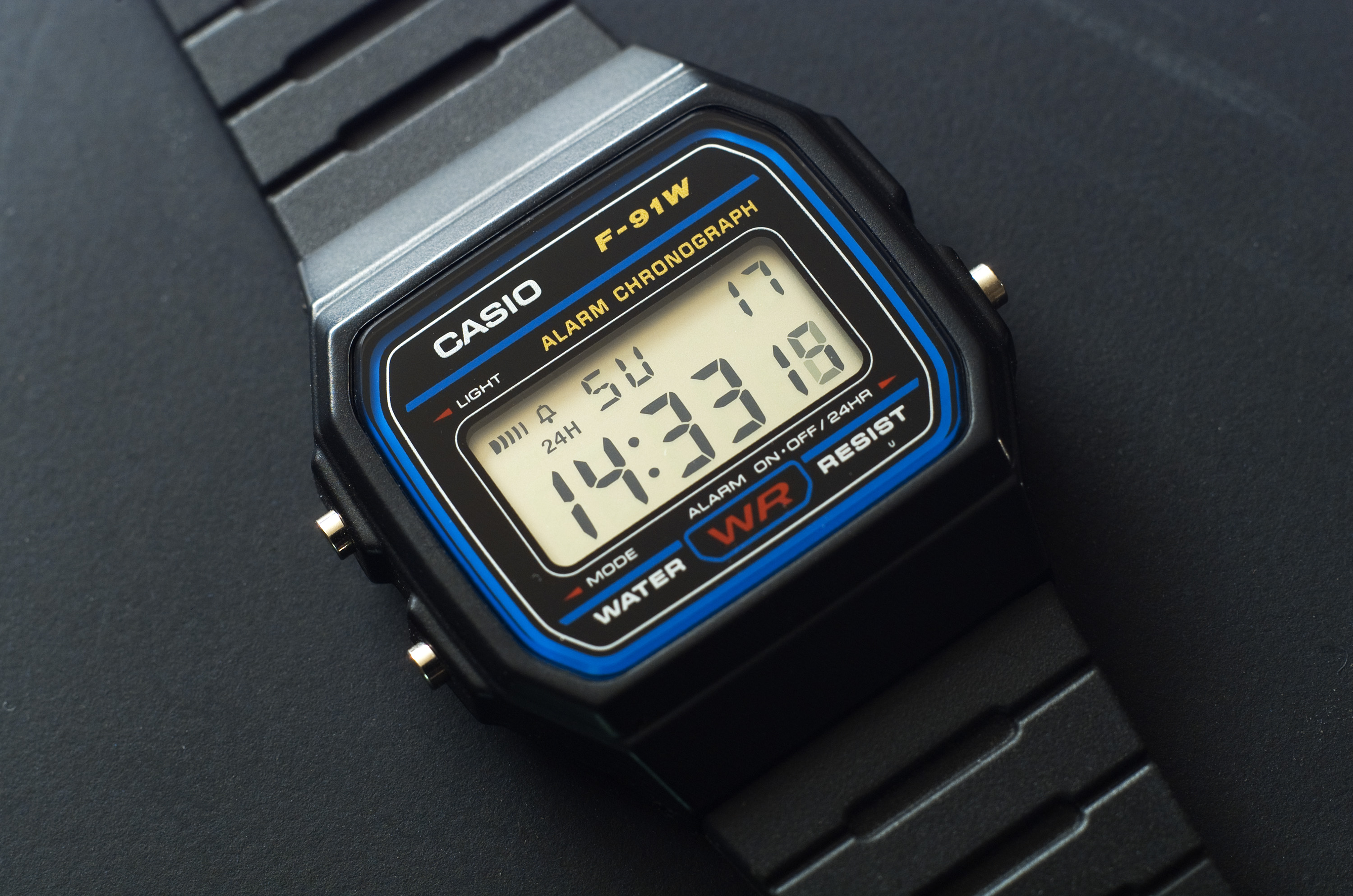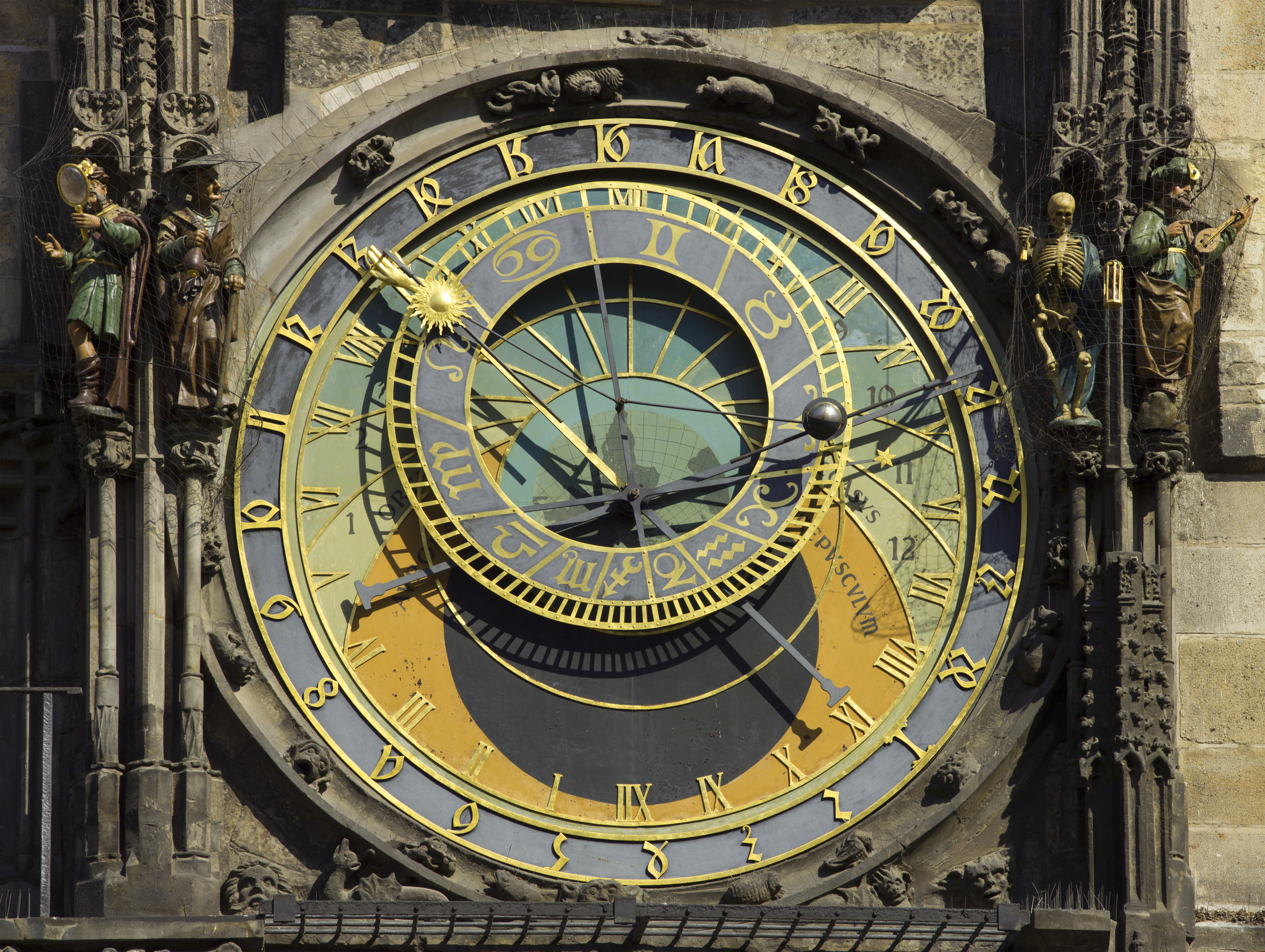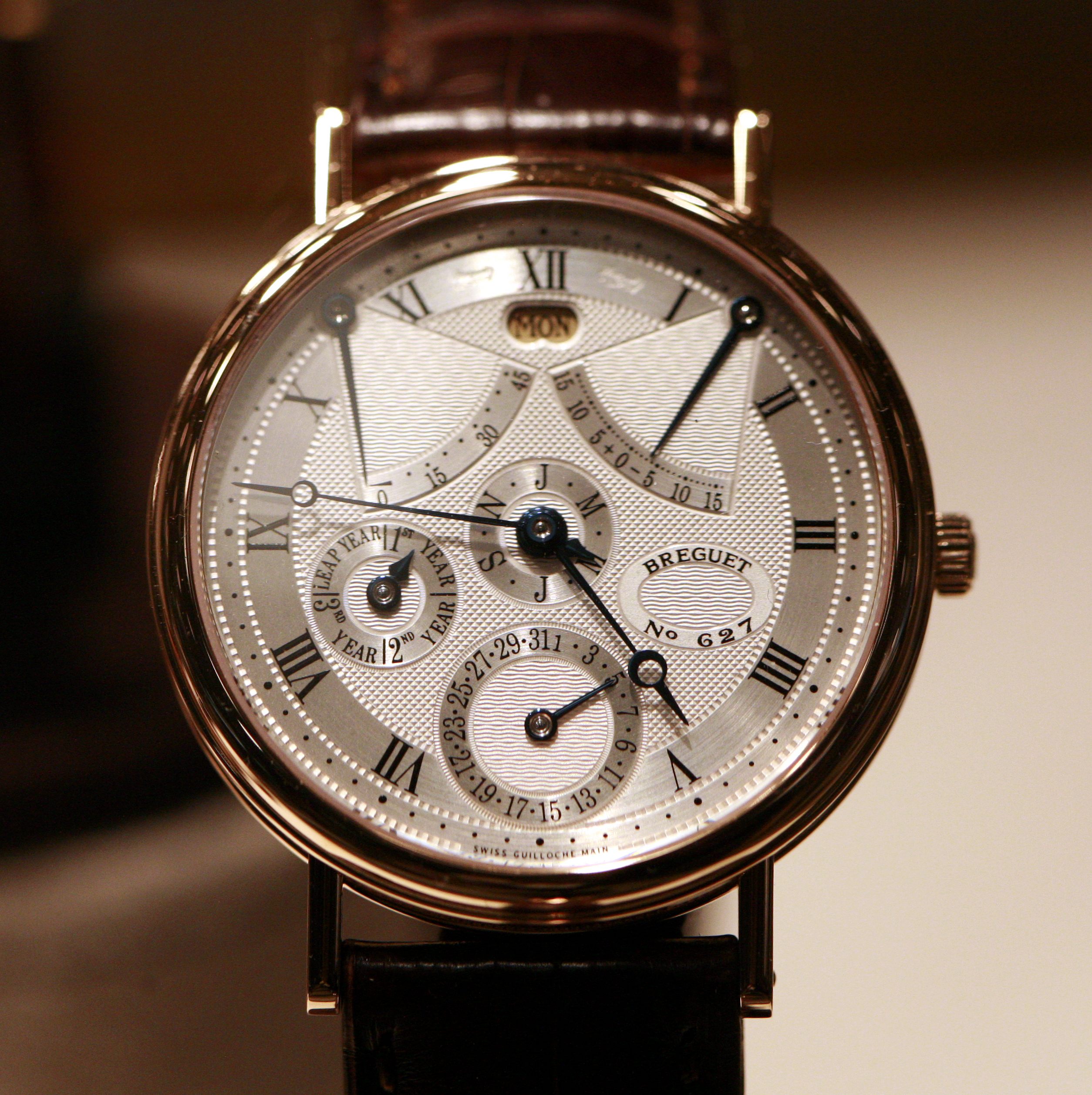|
Tellurion
A tellurion (also spelled ''tellurian'', ''tellurium'', and yet another name is ''loxocosm''), is a clock, typically of French or Swiss origin, surmounted by a mechanism that depicts how day, night, and the seasons are caused by the rotation and orientation of Earth on its axis and its orbit around the Sun. The clock normally also displays the phase of the Moon and the four-year ( perpetual) calendar. It is related to the orrery, which illustrates the relative positions and motions of the planets and moons in the Solar System in a heliocentric model. The word tellurion derives from the Latin ''tellus'', meaning "earth". See also * Astronomical clock An astronomical clock, horologium, or orloj is a clock with special mechanisms and dials to display astronomical information, such as the relative positions of the Sun, Moon, zodiacal constellations, and sometimes major planets. Definition ... * Solar System models References External links Astronomical instrume ... [...More Info...] [...Related Items...] OR: [Wikipedia] [Google] [Baidu] |
Orrery
An orrery is a mechanical Solar System model, model of the Solar System that illustrates or predicts the relative positions and motions of the planets and natural satellite, moons, usually according to the heliocentric model. It may also represent the relative sizes of these bodies; however, since accurate scaling is often not practical due to the actual large ratio differences, it may use a scaled-down approximation. Ancient Greek astronomy, The Greeks had working planetarium, planetaria, but the first modern example was produced by John Rowley. He named it "orrery" for his patron Charles Boyle, 4th Earl of Orrery (in County Cork, Ireland). The plaque on it reads "Orrery invented by Graham 1700 improved by Rowley and presented by him to John [sic] Earl of Orrery after whom it was named at the suggestion of Richard Steele." Orreries are typically driven by a clockwork mechanism with a globe representing the Sun at the centre, and with a planet at the end of each of a series of a ... [...More Info...] [...Related Items...] OR: [Wikipedia] [Google] [Baidu] |
Clock
A clock or chronometer is a device that measures and displays time. The clock is one of the oldest Invention, human inventions, meeting the need to measure intervals of time shorter than the natural units such as the day, the lunar month, and the year. Devices operating on several physical processes have been used over the Millennium, millennia. Some predecessors to the modern clock may be considered "clocks" that are based on movement in nature: A sundial shows the time by displaying the position of a shadow on a flat surface. There is a range of duration timers, a well-known example being the hourglass. Water clocks, along with sundials, are possibly the oldest time-measuring instruments. A major advance occurred with the invention of the verge escapement, which made possible the first mechanical clocks around 1300 in Europe, which kept time with oscillating timekeepers like balance wheels., pp. 103–104., p. 31. Traditionally, in horology (the study of timekeeping), the ... [...More Info...] [...Related Items...] OR: [Wikipedia] [Google] [Baidu] |
Solar System Models
Solar may refer to: Astronomy * Of or relating to the Sun ** Solar telescope, a special purpose telescope used to observe the Sun ** A device that utilizes solar energy (e.g. "solar panels") ** Solar calendar, a calendar whose dates indicate the position of the Earth on its revolution around the Sun ** Solar eclipse, an eclipse of a sun in which it is obstructed by the moon ** Solar System, the planetary system made up by the Sun and the objects orbiting it * Solar Maximum Mission, a satellite * SOLAR (ISS), an observatory on International Space Station Music * "Solar" (composition), attributed to Miles Davis * ''Solar'' (Red Garland album), 1962 * ''Solar'' (Taeyang album), 2010 * ''Solar'', a 2011 album by Rubik * "Solar", a song by Northlane from ''Mesmer'', 2017 * "Solar", a song by Sault from ''Air'', 2022 * ”Solar”, a song by Stam1na from '' Taival'', 2018 * SOLAR Records, a record label Geography * Solar (Spanish term), a type of urban site * Solar, County ... [...More Info...] [...Related Items...] OR: [Wikipedia] [Google] [Baidu] |
Astronomical Clocks
An astronomical clock, horologium, or orloj is a clock with special mechanism (technology), mechanisms and dial (measurement), dials to display astronomical information, such as the relative positions of the Sun, Moon, zodiacal constellations, and sometimes major planets. Definition The term is loosely used to refer to any clock that shows, in addition to the time of day, astronomical information. This could include the location of the Sun and Moon in the sky, the age and Lunar phases, the position of the Sun on the ecliptic and the current zodiac sign, the sidereal time, and other astronomical data such as the Lunar node, Moon's nodes for indicating eclipses), or a rotating star map. The term should not be confused with an ''astronomical regulator'', a high precision but otherwise ordinary pendulum clock used in observatories. Astronomical clocks usually represent the Solar System using the geocentric model. The center of the dial is often marked with a disc or sphere repre ... [...More Info...] [...Related Items...] OR: [Wikipedia] [Google] [Baidu] |
Astronomical Instruments
An astronomical instrument is a device for observing, measuring or recording astronomical data. They are used in the scientific field of astronomy, a natural science that studies celestial objects and the phenomena that occur in the cosmos, with the object of explaining their origin and evolution over time. Many are also used in navigation and surveying. Astronomical instruments include:Descriptions here are taken automatically from the linked articles or from items on Wikidata. * * * * * * * * * * * * * * * * * * * * * * * * * * * * * * * * * * * * * * Radio plate * * * * * * * * * * * * * See also *Astronomy * Outline of astronomy *Surveying instrument Instruments used in surveying include: * Alidade * Alidade table * Cosmolabe * Dioptra * Dumpy level * Engineer's chain * Geodimeter * Graphometer * Groma (surveying) * Laser scanning * Level * Level staff * Measuring tape * Plane table * ... * Measurement instrument Notes {{DEFAULTSORT:Astronomical instruments ... [...More Info...] [...Related Items...] OR: [Wikipedia] [Google] [Baidu] |
Solar System Model
Solar System models, especially mechanical models, called '' orreries'', that illustrate the relative positions and motions of the planets and moons in the Solar System have been built for centuries. While they often showed relative sizes, these models were usually not built to scale. The enormous ratio of interplanetary distances to planetary diameters makes constructing a scale model of the Solar System a challenging task. As one example of the difficulty, the distance between the Earth and the Sun is almost 12,000 times the diameter of the Earth. If the smaller planets are to be easily visible to the naked eye, large outdoor spaces are generally necessary, as is some means for highlighting objects that might otherwise not be noticed from a distance. The Boston Museum of Science had placed bronze models of the planets in major public buildings, all on similar stands with interpretive labels. [...More Info...] [...Related Items...] OR: [Wikipedia] [Google] [Baidu] |
Astronomical Clock
An astronomical clock, horologium, or orloj is a clock with special mechanisms and dials to display astronomical information, such as the relative positions of the Sun, Moon, zodiacal constellations, and sometimes major planets. Definition The term is loosely used to refer to any clock that shows, in addition to the time of day, astronomical information. This could include the location of the Sun and Moon in the sky, the age and Lunar phases, the position of the Sun on the ecliptic and the current zodiac sign, the sidereal time, and other astronomical data such as the Moon's nodes for indicating eclipses), or a rotating star map. The term should not be confused with an ''astronomical regulator'', a high precision but otherwise ordinary pendulum clock used in observatories. Astronomical clocks usually represent the Solar System using the geocentric model. The center of the dial is often marked with a disc or sphere representing the Earth, located at the center of the S ... [...More Info...] [...Related Items...] OR: [Wikipedia] [Google] [Baidu] |
Musée Des Arts Et Métiers
The Musée des Arts et Métiers (; English: Museum of Arts and Crafts) is an industrial design museum in Paris that houses the collection of the Conservatoire national des arts et métiers, which was founded in 1794 as a repository for the preservation of scientific instruments and inventions. History Since its foundation, the museum has been housed in the deserted priory of Saint-Martin-des-Champs on the Rue Réaumur in the 3rd arrondissement of Paris. Today the museum, which underwent major renovations in 1990, includes an additional building adjacent to the abbey, with larger objects remaining in the abbey itself. Collection The museum has over 80,000 objects and 15,000 drawings in its collection, of which about 2,500 are on display in Paris. The rest of the collection is preserved in a storehouse in Saint-Denis, Seine-Saint-Denis, Saint-Denis. Among its collection is an original version of the Foucault pendulum, the original model of ''Liberty Enlightening the World'' (commo ... [...More Info...] [...Related Items...] OR: [Wikipedia] [Google] [Baidu] |
John Winthrop (1714–1779)
John Winthrop (December 19, 1714 – May 3, 1779) was an American mathematician, physicist and astronomer. He was the 2nd Hollis Professor of Mathematics and Natural Philosophy in Harvard College. Early life John Winthrop was born in Boston, Massachusetts. His great-great-grandfather, also named John Winthrop, was founder of the Massachusetts Bay Colony. He graduated in 1732 from Harvard, where, from 1738 until his death, he served as professor of mathematics and natural philosophy. Career Professor Winthrop was one of the foremost men of science in America during the 18th century, and his impact on its early advance in New England was particularly significant. Both Benjamin Franklin and Benjamin Thompson (Count Rumford) probably owed much of their early interest in scientific research to his influence. He also had a decisive influence in the early philosophical education of John Adams during the latter's time at Harvard. He corresponded regularly with the Royal Society i ... [...More Info...] [...Related Items...] OR: [Wikipedia] [Google] [Baidu] |
Solar System
The Solar SystemCapitalization of the name varies. The International Astronomical Union, the authoritative body regarding astronomical nomenclature, specifies capitalizing the names of all individual astronomical objects but uses mixed "Solar System" and "solar system" structures in theinaming guidelines document. The name is commonly rendered in lower case ('solar system'), as, for example, in the ''Oxford English Dictionary'' an''Merriam-Webster's 11th Collegiate Dictionary''. is the gravitationally bound Planetary system, system of the Sun and the objects that orbit it. It Formation and evolution of the Solar System, formed about 4.6 billion years ago when a dense region of a molecular cloud collapsed, forming the Sun and a protoplanetary disc. The Sun is a typical star that maintains a hydrostatic equilibrium, balanced equilibrium by the thermonuclear fusion, fusion of hydrogen into helium at its stellar core, core, releasing this energy from its outer photosphere. As ... [...More Info...] [...Related Items...] OR: [Wikipedia] [Google] [Baidu] |
Perpetual Calendar
A perpetual calendar is a calendar valid for many years, usually designed to look up the day of the week for a given date in the past or future. For the Gregorian and Julian calendars, a perpetual calendar typically consists of one of three general variations: # Fourteen one-year calendars, plus a table to show which one-year calendar is to be used for any given year. These one-year calendars divide evenly into two sets of seven calendars: seven for each common year (the year that does not have a February 29) with each of the seven starting on a different day of the week, and seven for each leap year, again with each one starting on a different day of the week, totaling fourteen. (See Dominical letter for one common naming scheme for the 14 calendars.) # Seven (31-day) one-month calendars (or seven each of 28–31 day month lengths, for a total of 28) and one or more tables to show which calendar is used for any given month. Some perpetual calendars' tables slide against ea ... [...More Info...] [...Related Items...] OR: [Wikipedia] [Google] [Baidu] |
Daytime
Daytime or day as observed on Earth is the period of the day during which a given location experiences Daylight, natural illumination from direct sunlight. Daytime occurs when the Sun appears above the local horizon, that is, anywhere on the globe's Hemispheres of Earth, hemisphere facing the Sun. In direct sunlight the movement of the sun can be recorded and observed using a sundial that casts a shadow that slowly moves during the day. Other planets and natural satellites that rotate relative to a luminous Primary (astronomy), primary body, such as a local star, also experience daytime, but this article primarily discusses daytime on Earth. Very broadly, most humans tend to be awake during some of the daytime period at their location, and asleep during some of the night period. Characteristics Approximately half of Earth is illuminated at any time by the Sun. The area subjected to direct illumination is almost exactly half the planet; but because of atmospheric and other ef ... [...More Info...] [...Related Items...] OR: [Wikipedia] [Google] [Baidu] |







